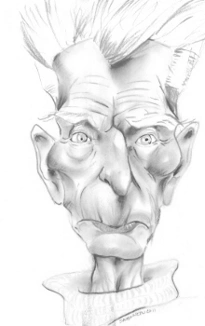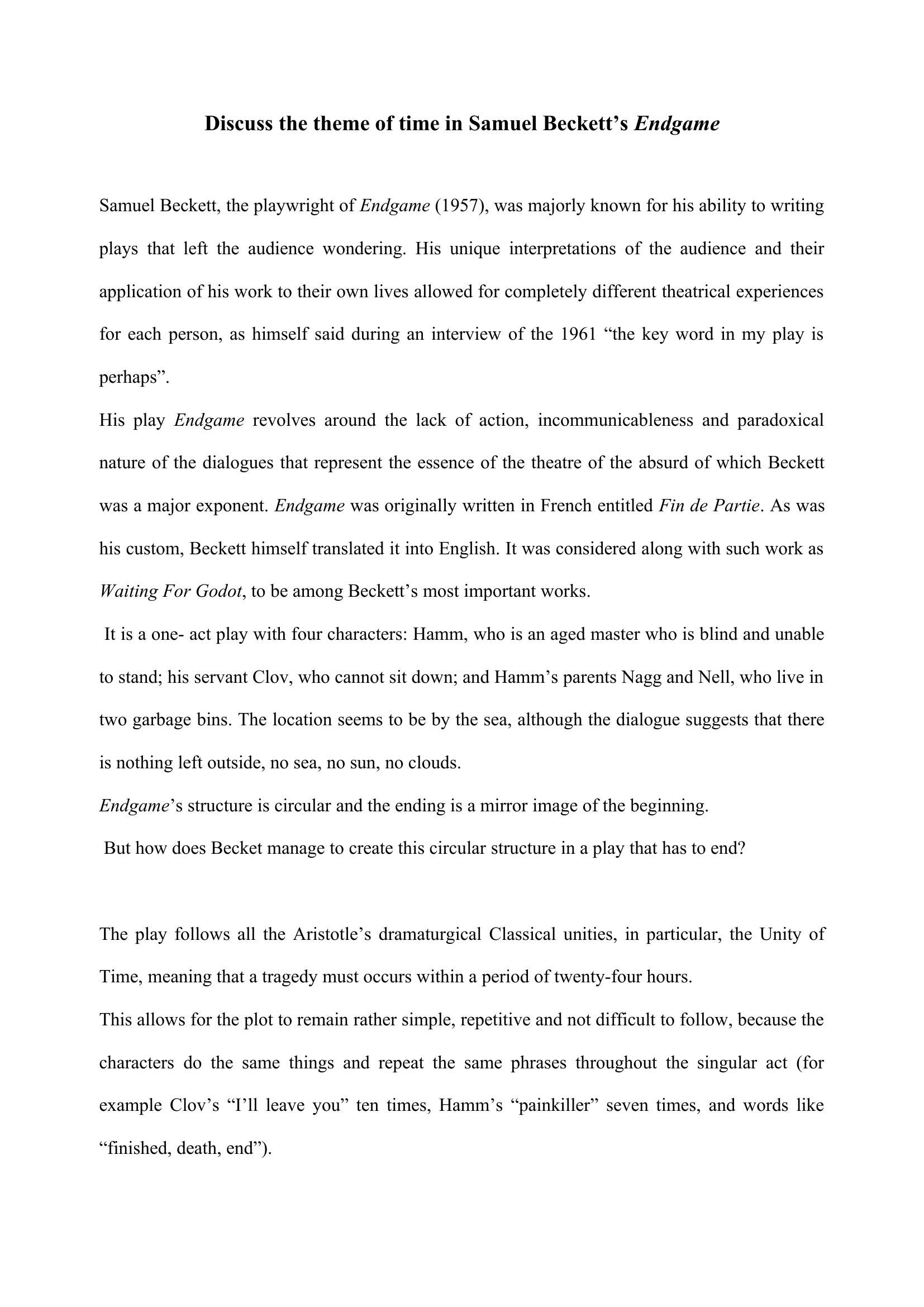On Beckett's Endgame
Publié le 04/03/2022

Extrait du document

«
Discuss the theme of time in Samuel Beckett’s Endgame
Samuel Beckett, the playwright of Endgame (1957), was majorly known for his ability to writing
plays that left the audience wondering.
His unique interpretations of the audience and their
application of his work to their own lives allowed for completely different theatrical experiences
for each person, as himself said during an interview of the 1961 “the key word in my play is
perhaps”.
His play Endgame revolves around the lack of action, incommunicableness and paradoxical
nature of the dialogues that represent the essence of the theatre of the absurd of which Beckett
was a major exponent.
Endgame was originally written in French entitled Fin de Partie.
As was
his custom, Beckett himself translated it into English.
It was considered along with such work as
Waiting For Godot, to be among Beckett’s most important works.
It is a one- act play with four characters: Hamm, who is an aged master who is blind and unable
to stand; his servant Clov, who cannot sit down; and Hamm’s parents Nagg and Nell, who live in
two garbage bins.
The location seems to be by the sea, although the dialogue suggests that there
is nothing left outside, no sea, no sun, no clouds.
Endgame’s structure is circular and the ending is a mirror image of the beginning.
But how does Becket manage to create this circular structure in a play that has to end?
The play follows all the Aristotle’s dramaturgical Classical unities, in particular, the Unity of
Time, meaning that a tragedy must occurs within a period of twenty-four hours.
This allows for the plot to remain rather simple, repetitive and not difficult to follow, because the
characters do the same things and repeat the same phrases throughout the singular act (for
example Clov’s “I’ll leave you” ten times, Hamm’s “painkiller” seven times, and words like
“finished, death, end”)..
»
↓↓↓ APERÇU DU DOCUMENT ↓↓↓
Liens utiles
- BECKETT - En attendant Godot (Estragon et Vladimir)
- Après avoir parlé du théâtre de Samuel Beckett, Gaétan Picon déclare à propos des pièces d'Ionesco qu'on assiste à notre époque à une « mise en question de la convention théâtrale ». En vous appuyant sur l'oeuvre d'un des écrivains que l'on a rangés parmi les créateurs d'un «anti-théâtre » vous montrerez comment elle s'oppose sur le plan des structures dramatiques et sur celui de la conception du comique au théâtre traditionnel.
- Samuel Beckett
- Beckett, En attendant Godot. I.
- Beckett, En attendant Godot. I.


